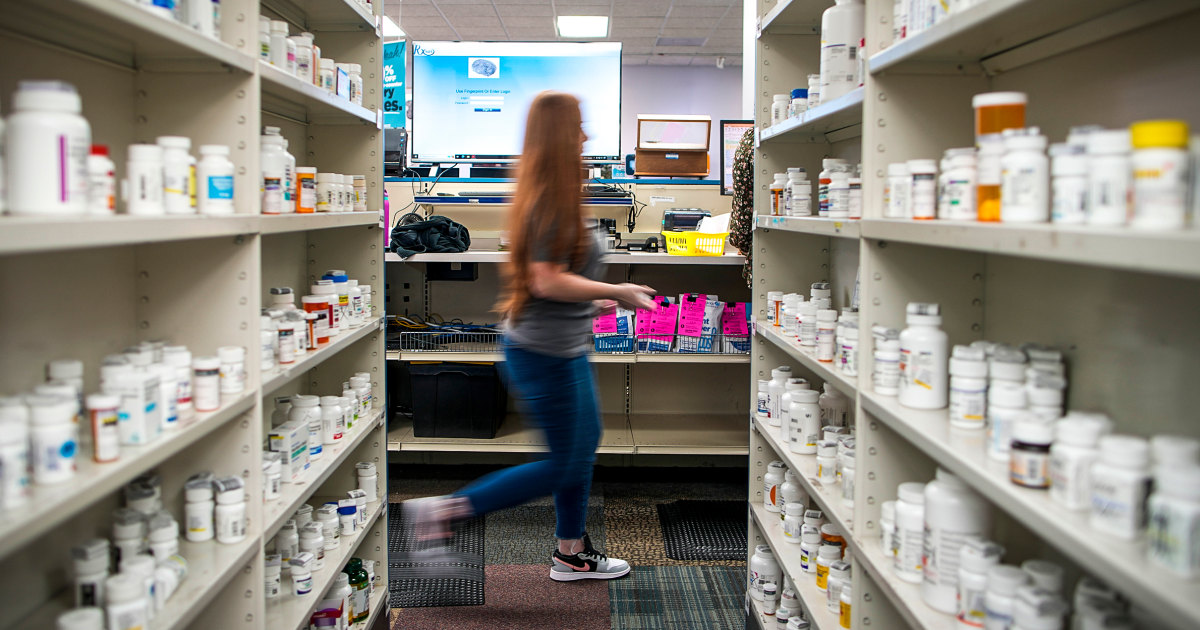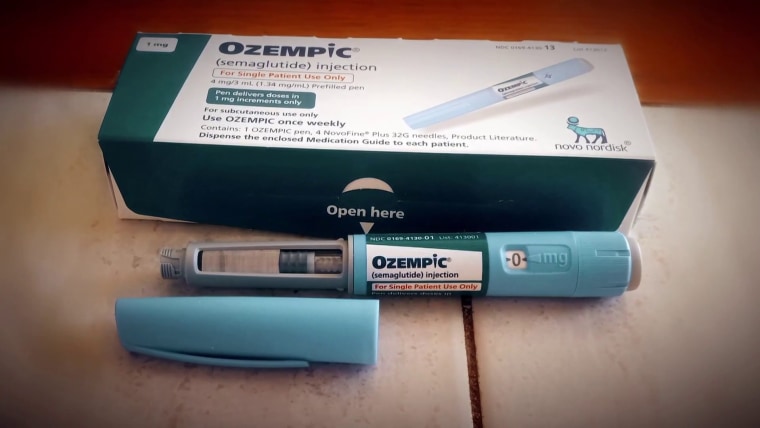While many pharmacists in the US have fought to get their hands on Ozempic, some haven’t bothered.
Nate Hux, the owner of Pickerington Pharmacy in Ohio, stopped stocking the diabetes drug, which has skyrocketed in popularity, particularly for its off-label use as a weight-loss aid, last summer.
At the time, there was a widespread shortage of Ozempic, but that wasn’t what prompted Hux to get rid of the drug. Instead, he said, it was because selling the drug was hurting his business.
The average wholesale price of Ozempic paid by pharmacies is around $900 for a 30-day supply, he said. But Hux said that for each prescription, he was typically reimbursed for just $860.
“It’s too expensive for us to store,” he said.
Hux is among a group of independent pharmacists who have stopped selling Ozempic and other drugs in the same class, in part, they say, due to underpayments by pharmaceutical benefit managers, who act as intermediaries between pharmacists and insurers. . These drugs, called GLP-1 agonists, are relatively new and still on patent, which means there are no generic alternatives.
The development adds a twist to the Ozempic saga in the US, where many patients over the past year have been forced to visit multiple pharmacies in search of the drug, which has been hard to find due to shortages.
Steve Hoffart, owner of Magnolia Pharmacy in Magnolia, Texas, stopped stocking Ozempic and similar diabetes drugs about a year ago. He was seeing reimbursements between $10 and $40 below the cost of the drugs.
The change, he said, was necessary to keep his pharmacy afloat.
“There have been supply issues, but a lot of independents just tell people we can’t get it because we can’t afford to distribute things below cost,” he said.
A threat to independent pharmacies
Underpayments are a big problem for independent pharmacists, who are often given lower reimbursement rates than larger retail pharmacy chains that have more bargaining power, said Inma Hernandez, an associate professor in the College of Pharmacy. and Skaggs Pharmaceutical Sciences from the University of California, San Diego.
“This is the reason why many independent pharmacies are closing,” he said, adding that there isn’t much pharmacists can do in response.
“These are not contracts that we can negotiate,” Hoffart said. “Take it or leave it. Either you accept the contract or you lose access to the patients.”
Allison Schneider, a spokeswoman for Novo Nordisk, the maker of Ozempic, said the company can’t control the price individual pharmacies pay for the drug or how much pharmacy benefit managers reimburse them. “These details are negotiated between pharmacies and external third parties,” she said.
According to the Commonwealth Fund, a nonprofit organization focused on public health issues, three pharmacy benefit managers (CVS Caremark, Cigna’s Express Scripts, and UnitedHealth Group’s OptumRx) account for 80% of the market, giving them tremendous bargaining power. All three are linked to major health insurance providers.
Pharmacy benefit managers have a special incentive to pay pharmacists less because they can take clients to their own businesses, said Andrea Pivarunas, a spokeswoman for the National Association of Community Pharmacists, a trade group of independent pharmacies.
Greg Lopes, spokesman for the Pharmaceutical Care Management Association, which represents pharmacy benefit managers, said, «Independent pharmacists are valued partners with pharmacy benefit companies in providing quality care and necessary medications to patients through affordable costs.»
The high costs of brand name drugs
Underpayments aren’t just seen in drugs like Ozempic.
According to Antonio Ciaccia, it is a problem with brand name drugs in general. Ciaccia is the CEO of 46brooklyna non-profit group that researches drug prices in the US.
The reimbursement rates offered by pharmacy benefit managers are intended to incentivize pharmacists to seek out the lowest-priced drug, Ciaccia said. This is usually not a problem for generic drugs, which can be found at low cost.
However, finding a low price for brand-name drugs is much more difficult because they are sold by a single manufacturer and are usually offered to pharmacists at a fixed price, he said.
Pharmacists can gain from selling brand name drugs at a loss if they can make up the difference by selling cheaper generic drugs that generate higher reimbursement rates.
“For a lot of pharmacies, they don’t have control over that,” Ciaccia said, referring to the generic drug lawsuit. «So as a result, many pharmacies will look at drugs that are being significantly underpaid and make a business decision not to let that drug affect their entire business.»
About two years ago, Mike Koelzer, a pharmacist and owner of Kay Pharmacy in Grand Rapids, Michigan, was forced to make that decision. To keep his business from going under, he made the difficult decision to stop selling all brand name drugs.
Doctors sometimes keep prescribing Ozempic and other brand-name drugs at his pharmacy, and some customers keep coming back asking for them, but Koezler tells them he doesn’t have them. He doesn’t believe his decision not to transport the drugs led to the loss of business.
“I think they get it,” he said. «They know that people are pushed by insurance.»
Hoffart, of Magnolia Pharmacy, acknowledged that his decision not to sell Ozempic and similar drugs could scare off some customers.
“I can no longer afford to give things away just out of kindness and goodwill,” Hoffart said. «It’s hard for some patients, but at some point, if we’re not in business, we can’t see any patients.»


